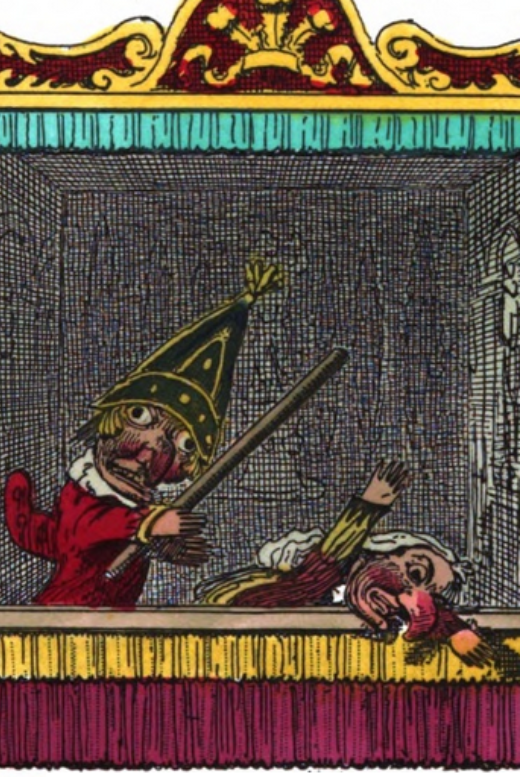
Printed summary
5 pages
Putschenelle ist tot, vivat Putschenelle!
Leben und Taten Putschenelle, der sogar den Teufel aus der Welt geschafft
According to Johannes E. Rabe, who reproduces it in its entirety in his study Kasper Putschenelle, it is the first text for glove puppets preserved in Hamburg. Rabe refers to Kasper theatre, but what he means is glove puppetry: the protagonist is named Putschenelle, a form derived from Polichinelle or, more likely, Pulcinella, and the twenty sketches that make up the play are clearly borrowed from Punch and Judy shows. The text printed on a leporello – printed by Ferdinand Trupp in Hamburg, undated – is accompanied by twenty illustrations, some of which are based on the work of the English illustrator George Cruikshank.
The hero fights with a stick against everyone around him.
The play is a series of short scenes. Putschenelle fights with a blind man who has hit him with his stick, throws his child out of the window, and knocks his wife unconscious. Then we see him stroking his dog Phylax. The next scene depicts two Moors dancing, which Putschenelle eventually joins in on: he knocks out both dancers. He gets on a horse, which throws him off, and the doctor arrives, and they fight with sticks. An officer recruits him to become a soldier, but Putschenelle proves too undisciplined and, when he has had enough, chases the officer with his stick. He is finally arrested and sentenced to death, but he hangs the executioner himself with a curse. The devil arrives, they fight, and Putschenelle kills him.
Publications and translations
Johannes E. Rabe: Kasper Putschenelle. Historisches über die Handpuppen und Althamburgische Kasperszenen, Hamburg, C. Boysen, 1912